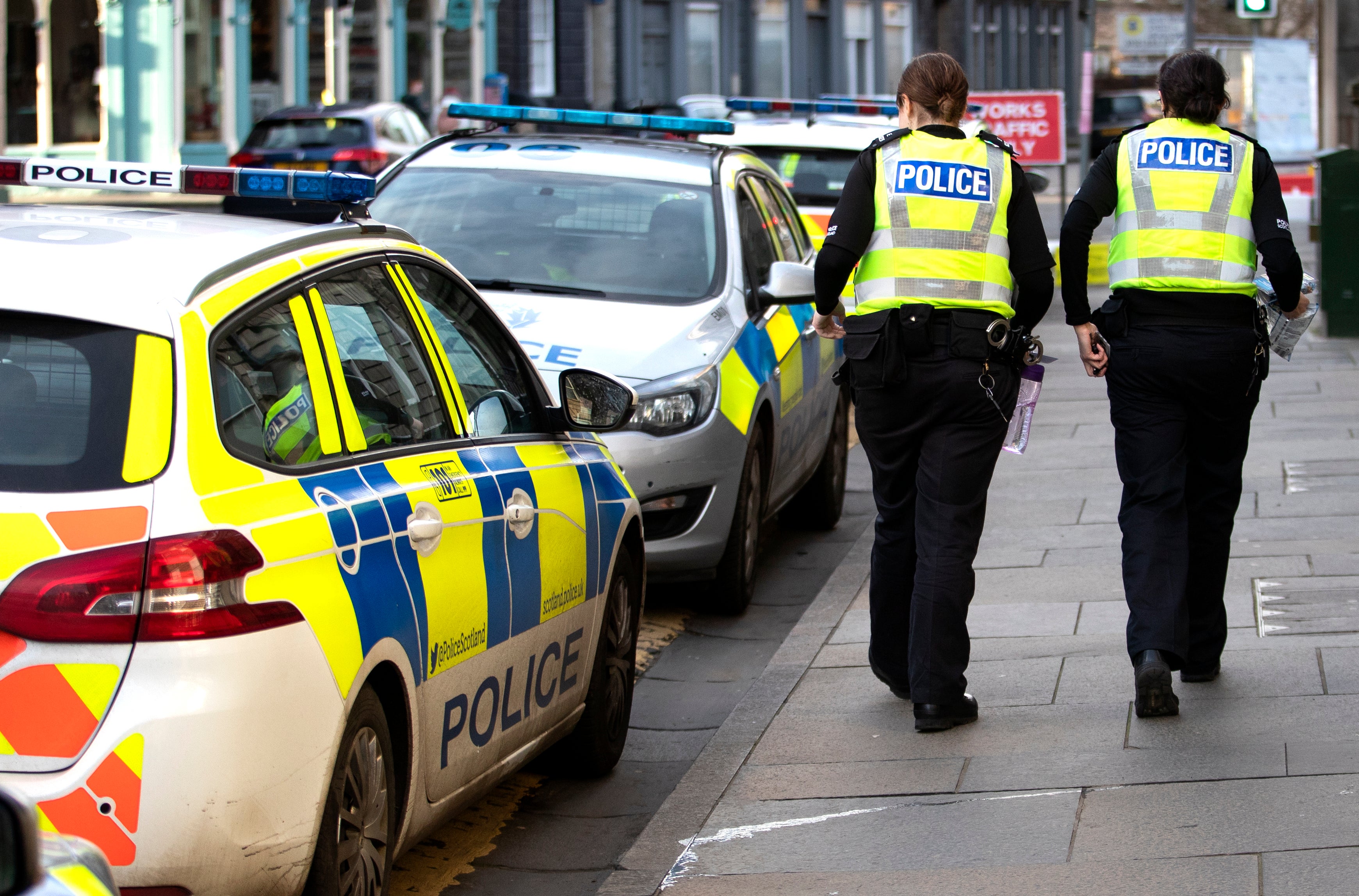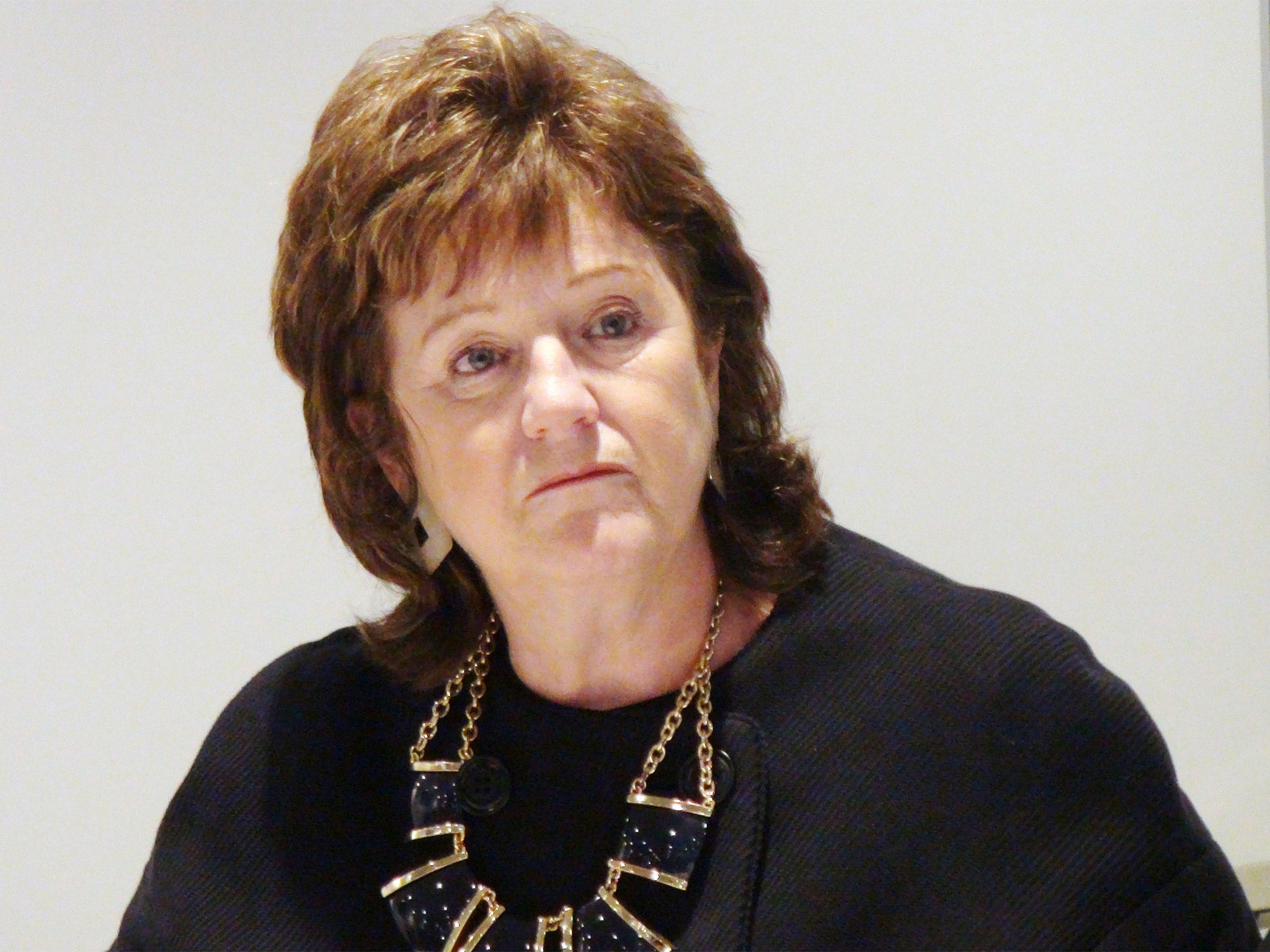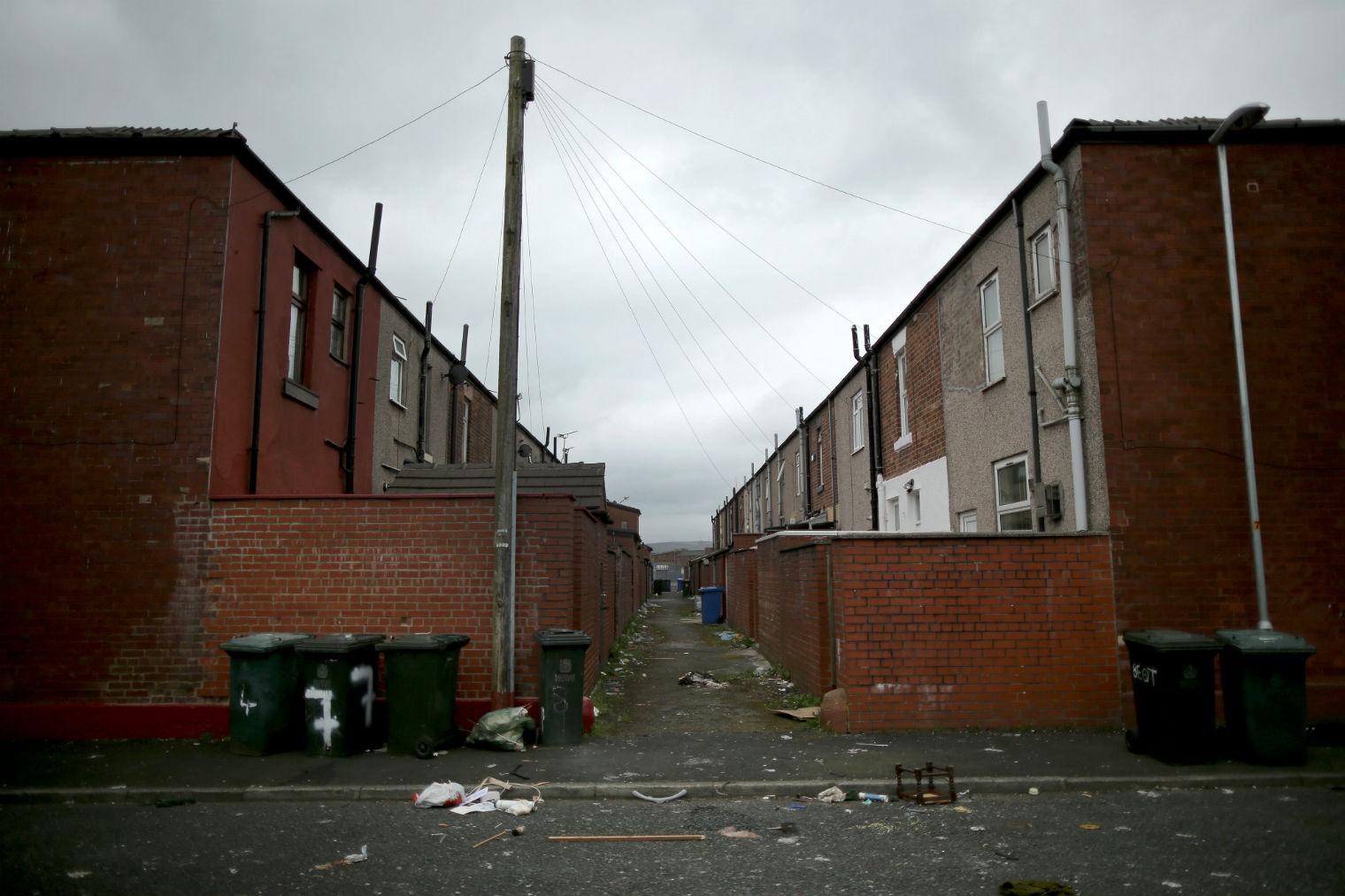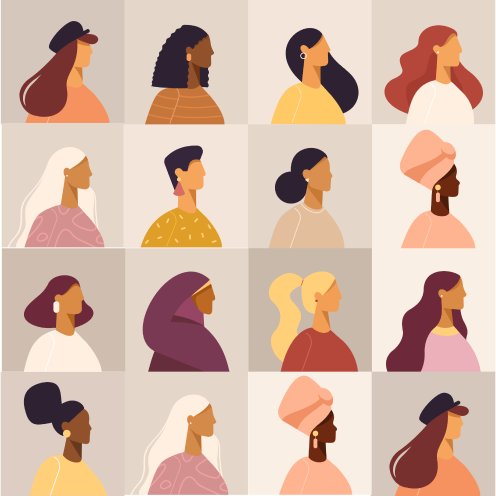Arrested and ignored: The ordeal of grooming gang victims at hands of authorities there to protect them
Several victims told police of abuse but no action was taken, while they were arrested for minor offences

A grooming gang victim was called a “slag” and accused of lying in court, while another reported being drugged and raped – only to see the perpetrator let off with a caution by police, a report has revealed.
An inquiry into abuse by grooming gangs across England and Wales has uncovered horrific cases of children being failed by authorities.
The Independent Inquiry into Child Sexual Abuse (IICSA) held 11 days of hearings and took written evidence from victims. These are their stories.
“A police officer told me I was what was going wrong in our society”
A victim codenamed CS-A12 was a victim of domestic violence by her stepfather, alongside her mother, and started running away from home at the age of 12.
She self-harmed and was treated for depression, and was placed in residential care in the mid-2000s.
She said that staff “just left me basically to do what I wanted”, and she met adult men who gave her alcohol and drugs and sexually exploited her over the following three to four years.
The woman said: “They pretended that I was part of their family. They gave me what I was lacking at the care home. They gave me somewhere where I felt like I belonged and somewhere where I felt like I was wanted.”
Police often stopped cars in which CS-A12 was with her abusers, but took no action even after finding out her age and that she was missing from care.
“One police officer told me I was what was going wrong in our society and that I was the type of person that was bringing about a bad society,” she told IICSA.
“Another one said that we were going to get these men in trouble because we wanted to act like child prostitutes.”
CS-A12 said that the care home staff knew that she and other girls were being given alcohol and drugs by adult men but let them go out on “dates” and did nothing when she was dropped off at the care home drunk.
“I was told by the staff that I was attention-seeking and stuff like that,“ she added.
“I were just treated like I was disgusting for doing it, not that there was a reason behind me doing it.”
She received a number of criminal convictions, including one she said resulted from her chasing a man who physically attacked her with a bread knife.
Defence barristers called victim ‘a lying slag’
A victim codenamed CS-A371 had parents who were heroin addicts and fellow users often visited their home.
She was taken into foster care in around 2003, when she was 10 years old, and by the age of 11 was being supplied with drugs herself.
She told IICSA she was given alcohol, cannabis and cigarettes by adult men who took her to flats and introduced her to their friends.
She was regularly used for sex from the age of 13 onwards, but “believed the men showed her the affection and love” and saw them as her friends at the time.
A police investigation started in 2010 and resulted in prosecutions, with her giving evidence against them at trial.
CS-A371 told IICSA she felt “very much like I was being bullied” in court.
She described being blamed and demeaned by defence barristers, who accused her of being racist and “a slag”.
They said repeatedly that she had wanted sex with the perpetrators and had lied about her age.
“I believe the reason I suffered from sexual exploitation over such a long period was because social workers had no empathy with me and my experience,” she said.
“They took the view that I was making my own choices when, in reality, I was trapped in a horrendous situation and needed help … they repeatedly describe me as engaging in risky behaviour as if the situation was my fault and my choice.”

Girl tried to kill herself after police took no action against rapist
For much of her childhood, a victim codenamed CS-A317 was in care in a number of council-run children’s homes.
She described being sexually abused and exploited from 2003, when she was 14. Her abusers gave her alcohol and drugs and made her have sexual intercourse with adult men. CS-A317 told IICSA that the staff within the children’s homes were “aware that she was having sex with an older male” but were dismissive and took no action to protect her.
In her view, the care home staff failed to protect her and colluded with her abusers by suggesting they collect her by car near to the children’s home rather than directly outside it. She said the abuse escalated and, when she was 18 years old, she was raped by the main perpetrator.
No action was taken by the police, who considered that she had consented. She had a breakdown and tried to take her own life.
CS-A317 felt that “it was easier for the police to criminalise the children rather than go after the abusing adults”. She was contacted later by the National Crime Agency (NCA) over the abuse in her teenage years, and as a result of that investigation, the perpetrator was convicted of sexual activity with a child and sentenced to nine years’ imprisonment.
CS-A317 found the overall experience with the NCA team “very positive” However, several features of the trial distressed her and during the sentencing hearing, she was required to sit in the public gallery in direct sight of her abuser.
Immediately after the offender was sentenced, she was confronted by the defendant’s family and friends who verbally attacked and threatened her.
Social workers closed raped child’s case because she was ‘putting herself at risk’
A victim codenamed CS-A372 grew up in a family where there was neglect and domestic violence, and was bullied at school.
She was first raped in around 2007, when she was aged 12, by a 16-year-old boy. Her mother reported this to police and the boy was prosecuted and convicted of rape.
CS-A372 was later introduced to a man aged around 30, who she believes was involved in drug dealing and prostitution.
He gave her gifts and was kind to her, but expected her to have sex with him and later demanded that she have sex with other men.
She self-harmed and took several overdoses, and by the time she was 13, CS-A372’s home life was increasingly violent and chaotic.
She told IICSA she was assaulted by her father, who also threatened to prostitute her. She ran away and was regularly picked up by the police, to whom she reported the sexual abuse she had experienced.
When she was interviewed about a rape in 2009, she was too traumatised to explain what had happened to her, and does not believe the police took meaningful steps to protect her. CS-A372 told us that children’s social care opened and closed her case on multiple occasions, despite their knowledge of her history of overdoses, chaotic domestic conditions and sexual exploitation.
Her records show that one of the decisions to close her case and take no further action was on the basis that children’s social care thought that she was “putting herself at risk”.
When she was 14, she was forced by an associate of the 30-year-old who had previously exploited her to perform oral sex on more than 20 adult men and filmed.
Several men were charged but the prosecutions were dropped, and months later, she was abducted by a group of men and forced to perform oral sex on 23 men while a gun was held to her head. She was also raped.
Afterwards, CS-A372 was placed back in care. She tried to cooperate with police investigations but felt very conflicted and she repeatedly self-harmed. CS-A372 considered that she was failed by the police and children’s social care and that there was a lack of coordination between agencies tasked with protecting her.
Rapist let off with caution after years of police failings
Another victim, codenamed CS-A317, experienced domestic violence as a young child and felt rejected at home.
She started to associate with older girls and men in the area, and started going repeatedly missing.
In around 2007, when CS-A373 was 12, an adult in the group she was associating with gave cannabis to her, forced her to perform oral sex and raped her.
She told a relative about the rape six months later and the police were informed, but no charges were brought.
At the age of 13, CS-A373 needed hospital treatment after she was given drugs by a local man.
Children’s social care intervened and she was placed in temporary care, then in foster homes, then in a care home out of the area.
In February 2011, when she was 15, CS-A373 met a 26-year-old man, and was allowed to continue meeting him after telling care home staff that he was 18.
She described meeting another man who gave her alcohol and cannabis before raping her. She reported it to the police but he was only cautioned for having sex with a child under 16. She was not provided with support or counselling following the rape and took an overdose. CS-A373 repeatedly went missing and was taken home by the police without any enquiry as to why she was running away.
She felt that the police and children’s social care had very little or no empathy for her, made no real attempt to understand her experiences and did not properly assess the risks she faced.
Male victim exploited by older men after becoming homeless
A male victim, codenamed CS-A435, lived with his mother, who was an alcoholic, after his parents separated.
Her poor care of him and his sibling caused arguments, and a full relationship breakdown caused him to be made homeless at the age of 16.
CS-A435 had been aware that he was attracted to men since the age of 10, and after becoming homeless was invited to stay at the home of a 41-year-old man.
He went there with two other boys, and was shown pornography and given alcohol.
He attempted to kiss one of the boys and they asked to leave. In 2009, as a consequence of this incident, CS-A435 was assessed by his local authority as being a child at risk of sexual exploitation.
Between the ages of 17 and 18, CS-A435 was seriously assaulted by a group of other boys. He became too scared to live in his flat and so became homeless. He began to frequent a local park to meet older men who could give him accommodation in exchange for sex. At the same time, a number of people in CS-A435’s peer group began sexually touching him in his sleep. CS-A435 felt that he had no choice but to allow this because these people provided him with a sense of security.
CS-A435 described the care provided by his local authority children’s social care as “unequivocally low”. He only met his social worker once in 18 months and felt that life-altering decisions were made about him without his involvement.
Girl, 15, jailed for minor offences after police refused to investigate abuse
A victim known as Daisy befriended a girl whose mother took drugs and was involved in prostitution at the age of 12.
She started going missing, was introduced to a group of adult men and would drink heavily with them in a flat.
She told IICSA that she first saw this as friendship but when she was 13 they started to sexually exploit her.
Men who were 10 or 12 years older than her told her they were her boyfriends and that they were in love. Daisy became pregnant at 14 and had an abortion. She described being “passed around” for sex by between 100 and 150 men.
Daisy was well known to the police by the time she was 13, and was arrested and charged on a number of occasions with offences such as being drunk and disorderly or assault.
She described these as being committed in the context of the abuse she was experiencing, and said she disclosed the abuse to the police.
On one occasion, officers told her they could not take further action because Daisy did not know the perpetrators’ names.
When she appeared at the youth offenders court in Rochdale, aged 15, her solicitor tried to explain the abuse she was experiencing but no investigation was conducted. Instead, Daisy was sentenced to four months in a young offender institution. On her release, the cycle of abuse and arrests continued.
In 2008, Daisy was approached by police officers who were primarily interested in abuse experienced by another girl.
Daisy gave evidence at the trial and several of the 11 men were convicted of child sexual offences.
After the trial, she reported to the police that she had been threatened and harassed, and that her home had been broken into, but she was given no support.

Boy groomed online and then pressured into sex with older men
At 12 years old, Greg was groomed by a 26-year-old male, who initially told him he was 18.
The first contact was online and Greg met the man in person after two weeks. Greg said that the man made him feel like he was in an intimate relationship.
He listened to Greg and agreed with him when Greg told him how unfair his life was. He introduced Greg to other adult men, who Greg believed were “the only people he had” and that they liked him for being himself.
They began to order Greg to go to various places and have sex with other men, paying for train tickets and taxi rides. Greg said the abuse he experienced became more severe and sadistic, as he was put into increasingly dangerous situations.
Girl abused after being taken into foster care
A victim known as CS-A1 was taken into foster care in 2016 on a voluntary basis when she was 13 years old, and was accommodated in 14 different placements, during which time she became a victim of child sexual exploitation.
She was found in hotel rooms on a number of occasions in 2018 with an adult man, and her mother thought digital evidence suggested that intercourse had taken place.
It was reported to police but no charges were brought.
The mother thought the care placements were “wholly inappropriate”, and one girl she met there introduced her to a network of older abusers.
The mother expressed frustration at the time taken council to act, telling IICSA: “It’s ironic that while the professionals had finally come to the conclusion that CS-A1 was at a sufficient threshold of risk of [child sexual exploitation], that sadly, in all likelihood, she had probably already been abused by this point.”
She said she and her husband were traumatised by watching helplessly as their daughter was sexually exploited and abused, and that they did not have a “clear path” to stopping it.
The report, published on Tuesday, exposed “extensive failures” by councils and police, leaving victims being treated as offenders, while perpetrators are not investigated or prosecuted.
Professor Alexis Jay, chair of the inquiry, said: “The sexual exploitation of children by networks is not a rare phenomenon confined to a small number of areas with high-profile cases.
“It is a crime which involves the sexual abuse of children in the most degrading and destructive ways, by multiple perpetrators.
“We found extensive failures by local authorities and police forces in the ways in which they tackled this sexual abuse. There appeared to be a flawed assumption that child sexual exploitation was on the wane, however it has become even more of a hidden problem and increasingly underestimated when only linked to other forms of criminal behaviour such as county lines.”



